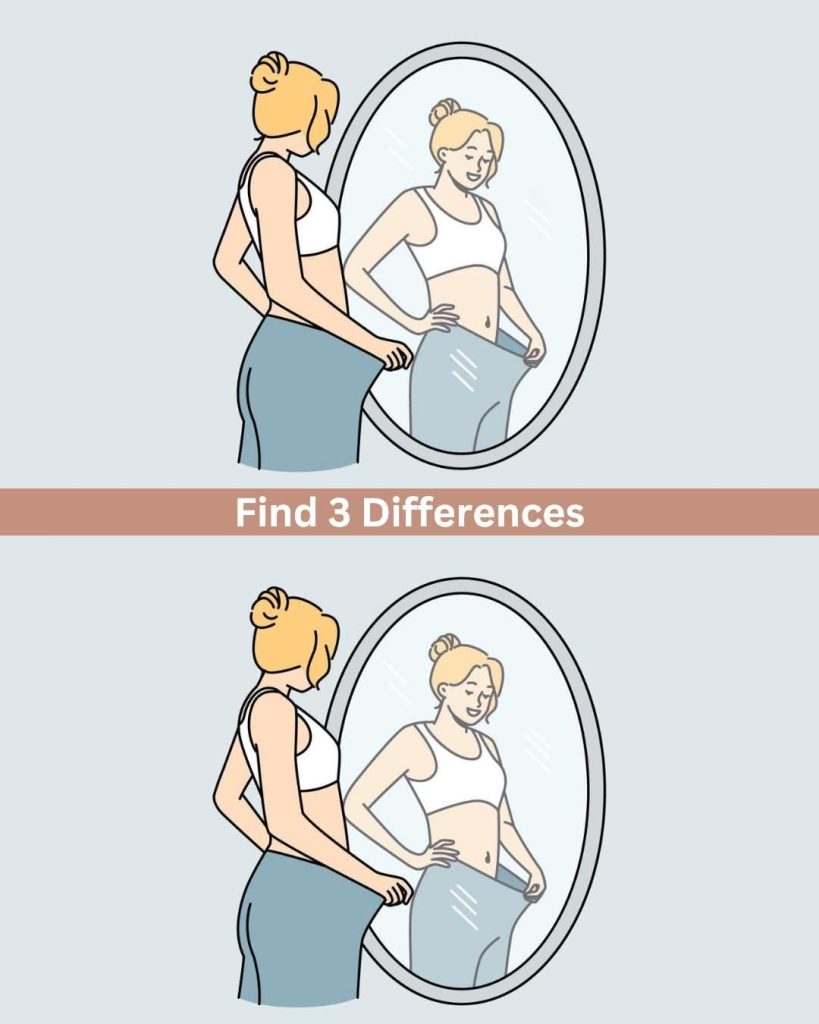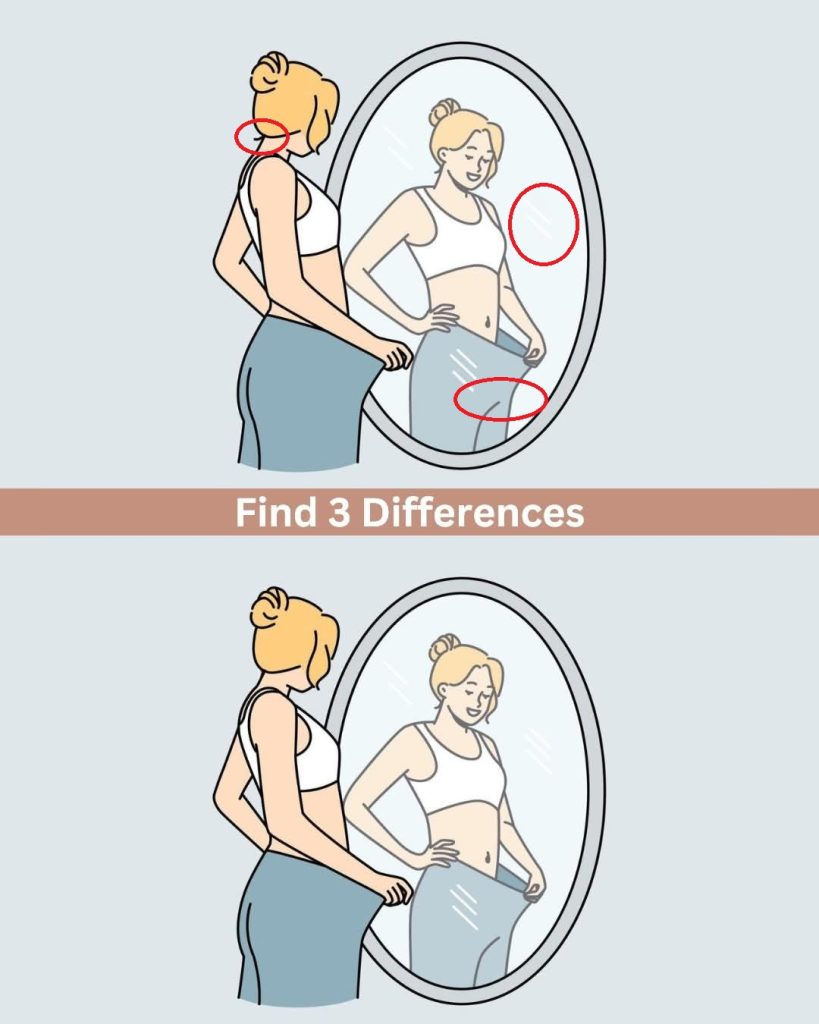In today’s fast-paced, visually overloaded world, we rarely stop to truly look. Our minds are trained to scan, skim, and scroll—but not to observe. That’s what makes visual puzzles like “Find the Difference” so deceptively powerful. They seem simple, even childlike, at first glance—but dig deeper, and you’ll realize they test a vital but fading skill: attention to detail.

This particular puzzle, titled “Find 3 Differences,” invites us to examine two nearly identical images of a woman looking at herself in a mirror. She’s wearing workout clothes, holding the waistband of her pants, as if checking her progress or transformation. At first, everything seems the same. But somewhere in this familiar scene, three subtle changes are waiting to be discovered.
The First Glance: Everything Looks the Same
At first glance, you may find yourself thinking: “Are there even any differences?” The hair, the outfit, the colors, the posture—they all seem perfectly matched. And that’s the trap. Your brain wants to assume the images are identical unless something big jumps out. But in this puzzle, the changes are small—just small enough to hide in plain sight.
So how do you find what’s been altered? The key is to break the image down, examine each section closely, and challenge your assumptions.
Video: Find 3 differences!
Step-by-Step Observation: Breaking Down the Image
To solve this puzzle, let’s divide the image into manageable parts and analyze them one by one. We’ll look at the real woman on the left, then shift our attention to the reflection in the mirror. Finally, we’ll examine the background elements, including lighting and shapes.
1. The Hair Clue – A Sneaky Missing Braid
Start at the top—her hair. In the upper image, the woman has a small tied braid or hair loop sticking out at the back of her head. It’s a subtle detail that adds character to her hairstyle. But in the lower image, this little braid is completely gone. Unless you’re deliberately checking the back of her head, it’s very easy to miss.
This difference tests our visual memory. When two images appear the same, we don’t recheck areas we assume haven’t changed. But here, the change is right at the top and central to the composition—proving that even the most visible parts can trick us.
2. Mirror Clue – The Light Reflections on the Right
Now shift your focus to the mirror. On the right side of the mirror, there are white streaks representing reflected light—a common stylistic detail to create a glassy effect. In the top image, there are only two light streaks. In the bottom image, however, a third streak appears near the top. It’s barely noticeable unless you’re counting or comparing side by side.
This kind of difference plays on our tendency to ignore backgrounds. Most people focus on the characters and objects—but visual puzzles often tweak the spaces we overlook. Adding just one small reflection forces us to slow down and really look.

3. The Pants Detail – A Shift in Shine
Finally, let’s take a closer look at the reflection of her pants in the mirror. There’s a white shine mark on the right leg of her pants. In the top image, this shine is shorter, ending around mid-thigh. But in the bottom image, the shine is significantly longer, stretching almost to the bottom of the pant leg.
This subtle change blends into the folds and color of the pants, making it extremely hard to catch unless you’re comparing shapes and lengths carefully. It also mimics natural lighting, which makes your brain less likely to question it.
Why Do We Miss These Differences?
There’s a psychological reason why we miss such small changes. It’s called change blindness—a phenomenon where our brains ignore minor visual differences because they seem insignificant or outside the main focus. Our minds tend to see what we expect to see. If two images are 95% identical, we mentally fill in the rest—even when those differences are right in front of us.
Also, the more we stare at a puzzle like this, the more our brains grow fatigued. Eyes gloss over, and we start “seeing” things that aren’t there—or missing things that clearly are. That’s why fresh eyes, patience, and a strategic approach are essential.
Video: Spot The Difference : Only Genius Find Differences [ Find The Difference #496 ]
The Real Value of the Puzzle
So, what’s the point of all this? Why spend time looking for three little differences?
Because this kind of puzzle trains your visual intelligence—your ability to notice, analyze, and remember small details. That’s a powerful skill, not just in games but in life: spotting errors in contracts, noticing changes in behavior, catching warning signs in health or safety—all these depend on being alert to detail.
In a time where speed is praised, slowing down to look carefully is revolutionary. This puzzle encourages us to pause, to focus, and to trust our eyes again. It reminds us that sometimes, what matters most is hiding in the smallest details.